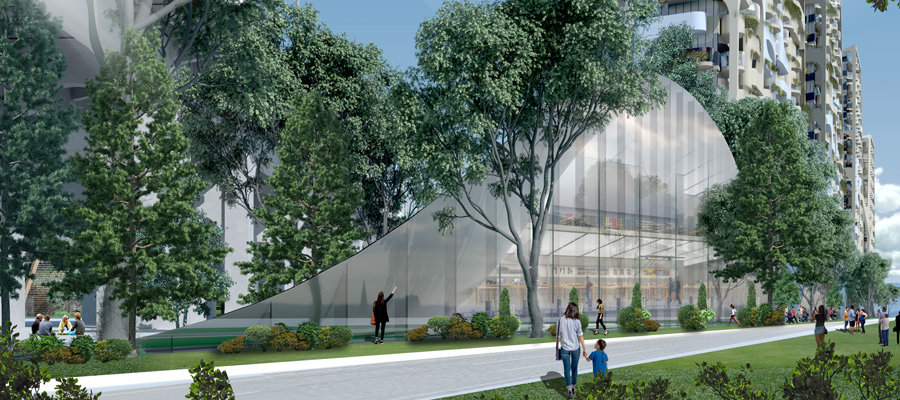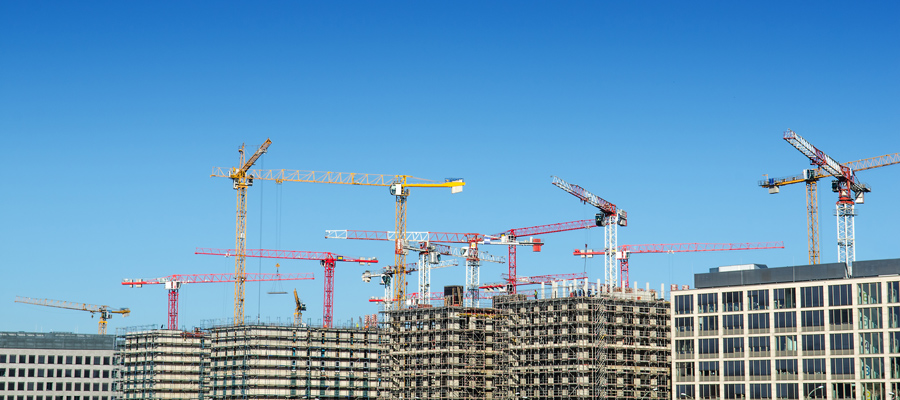Lessons from the Squamish Nation’s ambitious new rental housing plan

As we face a severe housing crisis in Vancouver, the Squamish Nation is poised to add 6,000 new homes—mostly market rental housing—to its 11 acre reserve lands in Kitsilano. This will create a major new ongoing revenue stream for the Nation, while providing rental homes to help ease Vancouver’s ultra-low vacancy rates. The Sen̓áḵw project also offers important lessons about how to tackle the housing crisis, including the continuing need for a massive expansion of non-market housing.
The plan for the Sen̓áḵw lands received overwhelming support from Squamish Nation members in a vote held in December. Phased construction is set to begin in 2021 and be completed in as little as five years.
The Squamish Nation’s project represents one small step towards reconciliation in a city that is built on stolen Indigenous land, as the City of Vancouver itself acknowledged back in 2014. The Sen̓áḵw lands where the project will be built represent only a sliver of the original reserve on the site (which is, in turn, only a sliver of the vast unceded Indigenous lands in this region and province). In 1913, the BC government forced the Squamish people off the Sen̓áḵw reserve and out of their homes, and the current smaller reserve land was only returned to the Squamish Nation in 2000.
As the Squamish Councillor, Khelsilem, noted to the Globe and Mail, “this whole city built up around [our people] with very little benefit.” Now the Squamish are aiming to maximize the benefits to their Nation that can flow from this small piece of their land.
One of the main benefits to the Squamish Nation of the Sen̓áḵw project will be economic—a large, steady new revenue stream from rents, as well as short-term revenues from strata sales (which will be on a 120-year land leases and may comprise up to 30% of the homes in the project). The Nation is also considering putting aside a few hundred of the homes specifically for Squamish members. They expect to employ Squamish workers and artists during the design and construction phase of the project.
In turn, the Sen̓áḵw project will provide benefits to the broader community in the form of a huge number of new rental homes (with zero displacement), providing close to a quarter of the City of Vancouver’s 10-year target for market rental housing. To be sure, the biggest housing need in this region remains publicly-funded, affordable rental housing, which should be a key focus for other levels of government. But rental housing of all kinds can help ease the vice-grip that landlords have over tenants in an ultra-low vacancy rate environment. During a climate emergency, it also allows more renters an opportunity to live in the central city, which has added new homes at a much slower rate than suburban areas in recent decades, leaving too many households dependent on automobile transportation.
Now the Squamish are aiming to maximize the benefits to their Nation that can flow from this small piece of their land.
The structure of the Sen̓áḵw project illustrates crucial lessons for tackling the housing crisis going forward.
One key lesson is that when valuable urban land is community-owned and controlled, it can unleash enormous shared benefits. At present much of the land wealth in Vancouver is privately held—and it’s extremely unequally owned. As a result, hundreds of billions of dollars in land value increases seen in recent years in this region have flowed to private landowners, rather than shared broadly.
Fundamentally, this land value is created collectively, reflecting what makes a location useful and attractive to people. It’s the result of public investments in infrastructure and services for transportation, water, sewer and electricity, as well as amenities like parks, community centres, libraries and public art. It also comes from everyone participating in the life of a thriving city—the people who create the services, community, and culture that makes a place desirable.
(The overwhelming portion of property wealth increases in Vancouver are in the value of the land, as opposed to physical investments in buildings on it.)
In the case of the Sen̓áḵw development, the wealth flowing from these lands will be shared by the Squamish people as a community. In other words, this land wealth is being socialized for the common good of the Squamish Nation. In the same spirit, the enormous land wealth in this city and province should be shared much more equally among those who create it—all of us—rather than flowing largely to private property owners. The scale of the land wealth at stake in this province is truly extraordinary. Since the mid-2000s alone, property wealth in British Columbia increased by about $1 trillion.
Just as the Squamish are unlocking the value in the Sen̓áḵw lands, other levels of government can do the same when land is publicly owned. Indeed, this speaks to the importance of not selling off precious public land—especially in high-demand urban areas—as occurred rampantly under the last provincial government (costing us hundreds of millions of dollars in forgone land value gains).
Senior levels government should focus on harnessing the value of publicly-owned lands to create below-market rental housing. After all, these governments have far more tools at their disposal to raise revenue than the Squamish Nation. Senior levels of government can also raise their own capital to create new housing, meaning they can rely less on private developers (as was needed for the Squamish in the case of the Sen̓áḵw project).
We must also increase the stock of public land ownership and ensure that a greater portion of socially-created land wealth is shared. Crucially, progressive property tax revenues can be used to help fund the massive expansion of permanently-affordable, publicly-owned housing that we so desperately need. In the case of the Sen̓áḵw project itself, the Squamish have indicated their willingness to include below-market housing if governments and bodies like Canada Mortgage and Housing Corporation (CHMC) provide the funding needed to bring rents down.
The enormous land wealth in this city and province should be shared much more equally among those who create it—all of us
The provincial government has already taken important steps on the housing file over the past two years. These include introducing the speculation and vacancy tax and additional tax on properties worth over $3 million, as well as increasing direct public investment in affordable housing. But to address the scale of the housing crisis, action will have to be stepped up much further still.
Another important lesson from the Squamish project is their decision to build relatively few parking spaces as part of Sen̓áḵw, focusing on providing homes that can be enjoyed without cars. The plan is to include about 600 parking spaces rather than the thousands of spaces that would normally be required by city regulations in a project of this size (even though a large portion of parking spaces in apartment buildings are ultimately left empty). Building fewer parking spaces has some major benefits, and this is a practice that should be expanded to other new housing around Metro Vancouver.
First, parking drives up the cost of creating new housing. In the case of Sen̓áḵw, constructing the standard amount of parking would have added hundreds of millions of dollars in additional construction costs. Underground parking is expensive to construct, generally costing at least $50,000 per parking stall in Vancouver (and using up extremely valuable land for surface parking would cost even more). On this particular site, the Squamish estimate that more spaces would have cost as much as $120,000 per stall. Reducing parking means more benefits flow to the Nation rather than toward creating storage for cars.
We can learn from their striking demonstration of how land wealth can be harnessed for the common good, and how to bring a climate emergency lens to creating new housing.
Second, as we face a climate emergency, we urgently need to provide transit-oriented, centrally-located rental homes for people rather than continue with regional growth patterns that increase dependence on costly automobile travel. Sen̓áḵw provides a great example of this type of housing in a region choked by traffic congestion and where most of the residential land is reserved for detached housing that is largely dependent on car transportation.
In short, the Squamish Nation is poised to benefit enormously from their Sen̓áḵw project—and renters in this region will benefit, too. We can learn from their striking demonstration of how land wealth can be harnessed for the common good, and how to bring a climate emergency lens to creating new housing. The scale of the housing crisis can seem overwhelming, but it’s a challenge we can overcome if we ensure that more of the vast land wealth in this region is shared by all.
This post is a part of an ongoing research project into affordable housing funded by the Vancouver Foundation.
Topics: Climate change & energy policy, First Nations & Indigenous, Housing & homelessness, Taxes



